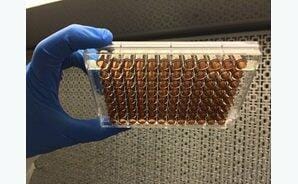Coating for Medical Implants Based on Prebiotic Compounds

Scientists from the Australian research center CSIRO have developed a new coating method based on the prebiotic materials that generated the first biomolecules. The cell-friendly polymer allowed the researchers to coat medical devices and implants to reduce the incidence of infection and rejection. The findings were published in the journal Asia Materials.
Prebiotic chemistry studies the chemical reactions that gave rise to the first biomolecules and eventually to life on Earth. The abiotic reaction pathways transformed inorganic into organic molecules, and those into biomolecules. These ancient compounds have been studied for decades, and hydrogen cyanide (HCN) is one of the most studied prebiotic molecules. HCN is thought to have been the precursor of the polymers that originated proteins and nucleic acids. A HCN trimer, aminomalononitrile (AMN), polymerizes into a nitrogenous polymer, and the Australian researchers have found a medical application for the HCN-derived compound. In a one step polymerization-and-deposition technique, AMN can be used to coat surfaces in a buffered aqueous solution.
AMN provides better tissue integration
The new coating can be used to cover a variety of organic and inorganic substrates. It is adhesive and non-cytotoxic, so it can be safely used for cell attachment. Another interesting feature of the new coating is its ability to immobilize other compounds, like metals. The researchers added silver compounds to the polymer, generating a coating with antimicrobial properties that reduces the risk of infection. These properties open the door to using the polymer in medical implants like bone replacements, catheters and pacemakers, increasing the likelihood of acceptance by the body.
CSIRO is approaching biomedical companies to manufacture the coating polymer at a commercial scale.
Source: CSIRO

